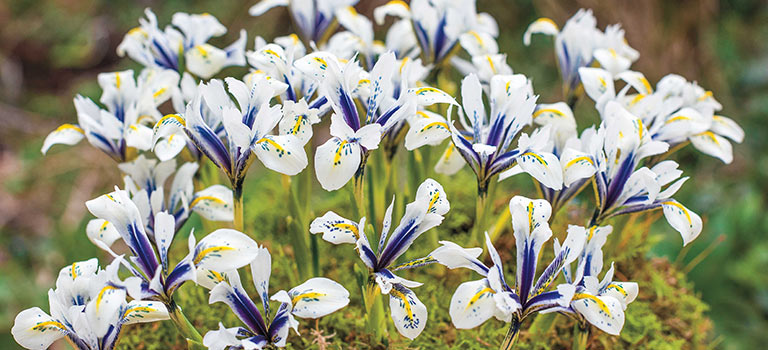The Iris’s characteristic linear form – three upright petals (standards) sitting atop three larger outer sepals (falls) makes it one of world’s most recognizable flowering plants. But with over 250 different species and countless cultivars, the taxonomy can leave one befuddled. Here’s a quick classification…
Types of iris
Irises can be classified into two broad groups – rhizome irises and bulbous irises. Rhizome irises are thickened horizontal stems that mostly grow underground, though they can be also be partially visible above the soil line at times. Rhizome irises have overlapping, sword-shaped leaves and three well known sub-divisions.
The Bearded Iris
Bearded irises are composed of four major parts – standards, falls, stigma flaps and the telltale beard. The bearded border iris, dwarf bearded iris and tall bearded iris are some of the most popular bearded iris varieties.
The Beardless Iris
The beardless iris comprises the standard standards, falls, and stigma flaps in addition to crests. The Dutch iris, Siberian iris and Japanese iris are some of the most beloved beardless iris varieties.
Crested Iris
Crested or Evansia irises comprise standards, falls, stigma flaps along with a yellow or orange crest. The flat flowers are marked by fringed petal edges and a clove pink aroma.
Bulbous irises grow underground from round or pear-shaped bulbs and are noticeably smaller than rhizome irises, usually both in plant and flower size. Two common types of bulbous iris are the Reticulata (early spring bloomers) and the Dutch bulbous(mid summer bloomers.) Bulbous irises need a period of dormancy after they finish blooming wherein the plants rest and replenish for the next season.



